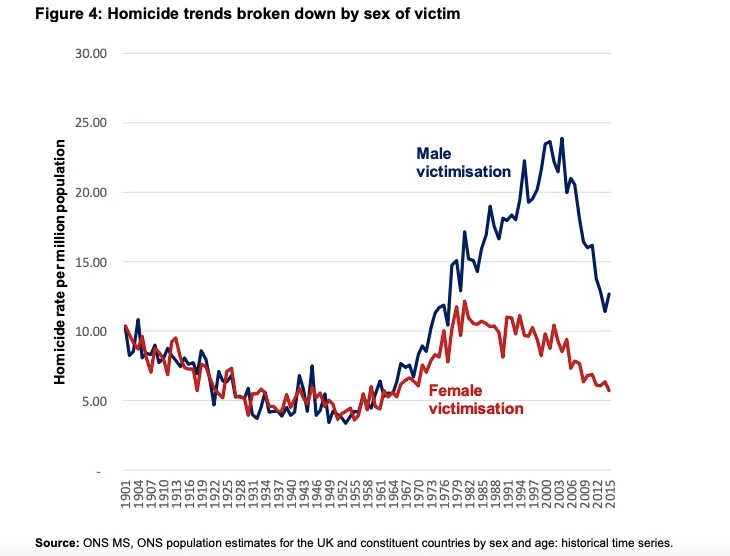
Review of The Case Against the Sexual Revolution by Louise Perry, 200 pages, Polity (June 2022) and Rethinking Sex: A Provocation by Christine Emba, 224 pages, Sentinel (March 2022)
The question of feminism and sex has been causing controversy for as long as feminism has existed, and has only intensified since the sexual revolution. In the 1980s, radical feminists, led by law professor Catharine MacKinnon and activist/writer Andrea Dworkin, regarded not only pornography but most heterosexual sex as male exploitation of women. This anti-porn faction clashed with pro-sex liberal feminists like Ellen Willis and Susie Bright, who focused on women’s sexual liberation. In the 1990s, the feminist campaign against date rape on college campuses sought to redefine many ambiguous sexual experiences as nonconsensual. This galvanized critics like Katie Roiphe, whose 1994 critique of “rape-crisis feminism,” The Morning After, assailed the tendency to portray men as predators and women as helpless victims. In the 21st century, the feminist revival of the past decade combined a “sex-positive” celebration of “enthusiastic consent” and female sexual liberation—in all its guises from kink to sex work—with the punitive spirit of #MeToo, which embraced MacKinnon’s dictum that “feminism is built on believing women's accounts of sexual use and abuse by men.” The unsurprising result has been confusion and dissonance.
Now, British journalist Louise Perry enters the fray with The Case Against the Sexual Revolution. It is, as the title suggests, a provocative book; so provocative, in fact, that radical feminist Julie Bindel contributed an effusive blurb to the dust-jacket (“Brilliantly written, cleverly argued … fresh and exciting”) and then wrote a heavily negative review for UnHerd, in which she attacked Perry for endorsing “pre-feminist sexual modesty” and urging women to “invest in a hypothetical chastity belt.”
What, then, is Perry’s controversial case against the sexual revolution, which was precipitated by the invention of reliable contraception but also challenged and dismantled a wide range of traditional cultural taboos? Her view is that, while women may have been freed to have sex without marriage and even without love, this freedom was and remains illusory—because, to quote Perry’s famous compatriot Kingsley Amis, “girls aren’t like that.” Or, as Perry puts it, “Women did not evolve to treat sex as meaningless, and trying to pretend otherwise does not end well.” Men, she argues, not only have a much stronger preference and capacity for casual and promiscuous sex; a substantial minority also have a propensity for violent predation and abuse. Thus, encouraging women to find liberation and empowerment in “having sex ‘like a man’” is to set them up to be hurt emotionally and sometimes physically: at best exploited, at worst raped, battered, or even murdered.
A true feminism that puts women’s needs first, Perry insists, would take its cue from those 18th and 19th century feminists—starting with Mary Wollstonecraft in A Vindication of the Rights of Woman—who addressed the sexual double standard by advocating male chastity rather than female licentiousness. How would that play out today? Perry’s ideal scenario is nothing less than restoring the normative expectation that sex must take place within a monogamous and preferably lifelong marriage. Short of that, she urges women to delay sex with a new partner “for at least a few months” and “[o]nly have sex with a man if you think he would make a good father to your children” (even if you don’t actually want to have children with him).
Perry is at her best when deftly and savagely skewering the pieties, hypocrisies, and absurdities of modern progressive feminists. She is scornful of those who think the answer to the dangers posed to women by violent males is to “teach men not to rape” (now why didn’t anyone think of that before?), or who invent pseudo-sexual orientations like “demisexual” to explain why a disproportionate number of women feel they need an emotional connection before they can feel sexual attraction. She is also compelling when she argues that post-1960s sexual liberationism, including its feminist incarnation, often ended up romanticizing some atrocious behavior and odious figures—a tendency that culminated in the cult of the Marquis de Sade.
Many of Perry’s theses are not only convincing, they are commonsensical: consent cannot be the end-all and be-all of sexual ethics (“there are a lot of sexual behaviors that are neither criminal nor good and about which the consent framework has very little to say”); “some desires are bad”; denying that “sex has some kind of specialness that makes it different from other acts” ultimately doesn’t work. She points out, for instance, that even liberals who insist that sex is morally neutral generally “care if their partner has sex with someone else, and not only because doing so involves breaking a promise”: polyamorist communities still struggle with sexual jealousy.
And yet, the picture Perry paints of the post-revolutionary sexual landscape is also unconvincing in several important ways. For a start, she vastly oversimplifies the treatment of sex and sexuality in mainstream culture. Has the view of adventurous, no-strings sex as empowering for women really been dominant in the post-sexual revolution era, with a near-taboo on the discussion of attendant risks from male violence to emotional attachment? Hit movies from the last half-century suggest otherwise. In Looking for Mr. Goodbar (1977), the heroine’s quest for sexual freedom leads to a string of disastrous relationships and culminates in rape and murder. In Fatal Attraction (1987), a single woman’s one-night stand with a married man plunges her into a destructive obsession that finally leads to her death.
Even the two television series Perry cites as paradigmatic vehicles of “liberal feminism” in which women affirm their agency through loveless, selfish sex—HBO’s Sex and the City (1998–2004) and the BBC’s The Fall (2013–2016)—are far more ambivalent than Perry allows. Yes, in the Sex and the City premiere, Manhattan sex columnist Carrie Bradshaw announced her intention to “stop looking for ‘Mr. Perfect’” and have fun—specifically, by using an unlikable ex as a human sex toy. But ultimately, most of the show was about Carrie and her friends’ respective quests for love (except for the happily promiscuous Samantha, who was something of a caricature). The Fall introduced its protagonist, police detective Stella Gibson, as a sexually confident woman who enjoyed a guilt-free one-nighter with a married colleague; but later on, the show undercut its heroine as much as it glamorized her, finally suggesting that her liberated façade may be the mask of a lonely and vulnerable woman still hurting from the loss of her father.
Media coverage of real-life female sexual liberation has also been far more nuanced and less gung-ho than The Case Against the Sexual Revolution would have its readers believe. Perry appears to think that her critique of hook-up culture as a man’s game in which women can only be the losers is revelatory, but it’s all been said before (and not just by countercultural conservatives like Wendy Shalit, who advanced the same thesis in her 1999 book A Return to Modesty). Washington Post reporter Laura Sessions Stepp, who chronicled the trend of “buddy” sex in high school and college in a 2003 article, warned that “[w]omen have always shouldered the emotional burden of sexual behavior … and to pretend that they can ignore their emotions easily is poppycock.” She followed up with a 2007 book titled Unhooked: How Young Women Pursue Sex, Delay Love, and Lose at Both.
True, there was something of a feminist pro-hookup backlash in the early 2010s, when Hanna Rosin argued that casual liaisons are a savvy strategy for career-minded young women to avoid investing too much time in romance. Still, when the New York Times devoted a long feature to hook-up culture in 2013 under the apparently approving title, “Sex on Campus: She Can Play That Game Too,” the piece gave plenty of room to the downsides, from romantic disappointment to sexual assault.
As it happens, a lot of those reports greatly exaggerated the prevalence of loveless, uncommitted sex; Perry makes the same mistake. In fact, in a 2010 survey of nearly 30,000 American college students, fewer than one-in-five men and one-in-six women reported having had more than two sexual partners (using a definition that included oral sex), while 38 percent of men and 43 percent of women reported only one and over a third of men and women alike had never had sex. More than half of the respondents said they were in a relationship at the time of the survey. Other studies around that time came up with similar findings; more recent college surveys, albeit smaller, point in the same direction. Beyond college campuses, about one-in-10 American singles not currently in relationships say they are looking only for casual dating.
Another problem is that, in her eagerness to push back against dogmatic sex-difference denial, Perry lapses into massive and drastic generalizations about women and men, despite some pro forma disclaimers that these differences are averages, not absolutes. Yes, the evidence of a greater male preference for sexual variety and a greater female preference for sexual commitment is quite strong; however, not only are there numerous variations in this pattern, but the preferences are often a matter of degree rather than a stark binary. (There are many gradations between “emotion-free hook-up” and “monogamous marriage.”) Perry acknowledges the “remarkable flexibility within male sexuality” that allows it to manifest itself in “cad” and “dad” modes, depending on the situation. But is there a female duality, too? Perry seems to think that, with a few exceptions, women who have casual sex have been conned into it, either by men or by a feminist culture that has duped them with a false promise of liberation. However, the evolutionary psychologists she cites in support of her views, such as David Buss, argue that women’s sexual strategies—also depending on circumstances—can include short-term as well as long-term mating.
Women’s sexual strategies—also depending on circumstances—can include short-term as well as long-term mating.
The result is that Perry’s indictment of the sexual revolution is disappointingly simplistic and one-sided. It gives short shrift to the women who find uncommitted or adventurous sex enjoyable (and plenty do, at least sometimes, as surveys about campus hook-ups indicate). It also ignores men who find the casual sex scene empty and unsatisfying, or prefer committed relationships but feel strong peer pressure to hook up (as noted, for instance, in a 2016 Quartz article that Perry cites for its conclusion that most women don’t like hookup culture). When The Case Against the Sexual Revolution invites readers to re-scrutinize their own sexual experiences, the questions are split sharply along gender lines: only women are asked if they have ever become attached to a casual sex partner but kept those feelings concealed, or felt disgusted about a consensual past experience; only men are asked if they ever ditched a partner after a sexual encounter or strung someone along despite sensing that she had developed an emotional attachment.
But in real life, things are more complicated. Sometimes, for instance—as journalist Peggy Orenstein found when interviewing teenage boys about sex and sexual norms—boys and young men who are interested in pursuing a relationship with a hookup partner fail to do so because they’re afraid she may dismiss the encounter as “just a party thing.” I have been, for the record, at both ends of some of the experiences on Perry’s lists.
Ultimately, for all her dissent from modern feminist orthodoxy, Perry’s own feminism is stuck in the same woman-as-victim mindset. It’s telling that one of the feminists she cites most approvingly is writer and activist Andrea Dworkin, who died in 2005 and was briefly touted as a misunderstood prophet during the rise of #MeToo. Dworkin may have been more correct about Sade than the sexual liberationists, but in her own way she was just as deranged and obsessed with sexual barbarism as the Marquis. (This is a woman who once wrote that Caesarian sections are a form of sadistic rape in which the doctors “cut directly into the uterus with a knife—a surgical fuck.”)
Perry makes the self-evident point that the male advantage in size and strength makes women far more vulnerable than men in sexual encounters with someone they don’t know well. But are women really trapped in the sexual hellscape she depicts in such lurid colors? I’m doubtful. Perry makes much, for instance, of an apparent rise in British cases of men charged with killing women who have employed a “rough sex” defense—particularly in deaths by strangulation—and links this to the trend of normalizing “kink.” But we’re talking about a miniscule number of cases; overall, official statistics show, the rise in homicides in the UK after the 1960s was due almost entirely to male victimization, and British women today are safer from homicide than at any point since the mid-1960s.

Should it be concerning that three-quarters of British women under 25 in a 2019 poll reported at least some experiences of being choked (defined as any hand-on-neck pressure), slapped (on any body part), or spat on during consensual sex? Or that one-in-six reported at least one instance of being upset or frightened by such an act? Are women who say they find pleasure in such activities pathetically deluded? The answers may be, once again, complicated; but Perry’s stubborn insistence that Girls Aren’t Like That can make her an unreliable narrator. She insists, for example, that women simply don’t (with “vanishingly rare” exceptions) enjoy erotic asphyxiation, since there is no record of them practicing it on their own. Yet the article she cites discussing this fetish among men mentions comparable (though rarer) cases in women, as does other research.
Meanwhile, Perry hardly ever acknowledges that men also suffer injuries on the sexual battlefield—from false accusations of misconduct to (yes) unwanted sex to a wide range of humiliating, cruel, or otherwise toxic behaviors of which humans of both sexes are capable. Perhaps it’s true that, “as the stronger and hornier sex,” it is more important for men to exercise moral restraint; but that is not the whole story. As for the idea that the new sexual order is rigged in men’s favor: Perry never even mentions the rather extraordinary fact that between 2002 and 2018, the proportion of men aged 18 to 24 reporting no partnered sex in the past year spiked from 19 percent to 31 percent.
Between 2002 and 2018, the proportion of men aged 18 to 24 reporting no partnered sex in the past year spiked from 19 percent to 31 percent.
(Sexual inactivity among women in this age group rose much more modestly, from 15 percent to 19 percent.) That’s a rather large share of young males who are clearly not on the winning side.


Perry’s book spurred me to dig up a trenchant critique of the sexual revolution published almost 40 years ago: a 1983 Psychology Today essay by writer and psychotherapist Peter Marin titled “A Revolution’s Broken Promises.” A secular liberal concerned that sex was being not only separated from love but “emptied of generosity,” Marin wrote about “various casualties of the sexual revolution” he had seen in his practice—from “young men and women … who, barely out of adolescence, had slept with so many people that they found themselves frigid or unresponsive beside those whom they genuinely loved” to middle-aged couples whose bonds had been shattered by the siren call of open marriage. Compared to The Case Against the Sexual Revolution, Marin’s examination of these pitfalls was remarkably sex-neutral, except for his observation that “men are less articulate [and] feel less justified than women in their public complaints” about the disappointments of sexual liberation. Perry’s book is an illustration of this tendency, and it weakens her case against the sexual revolution’s undoubted excesses.
For all its flaws, there is no doubt that The Case Against the Sexual Revolution taps into something in the zeitgeist. As evidence, one can look to another book with strikingly similar themes published just two months earlier. Rethinking Sex: A Provocation is by Washington Post reporter Christine Emba, and the echoes are downright uncanny, right down to the chapter titles: “Men and Women Are Different” (Perry)/“Men and Women Are Not the Same” (Emba); “Some Desires Are Worse Than Others” (Emba)/“Some Desires Are Bad”(Perry); “Sex Must Be Taken Seriously” (Perry)/“Sex Is Serious” (Emba, chapter section title). Emba speaks of “the tyranny of chill,” which requires people to pretend not to care; Perry, of the pressure on women to be the “Cool Girl.” Both authors stress that consensual sex isn’t necessarily good or ethical. Both lament that equality for women seems to have been (mis)interpreted as acting like “the worst sort of man—cavalier about sex and disdainful of real feeling” (Emba) or “having sex like an arsehole,” as Perry more pithily puts it. Both approvingly cite Dworkin.
Emba, who is in her early 30s, brings an interesting perspective to her book: a Catholic convert raised as an evangelical Christian, she spent her 20s as a virgin who rejected premarital sex on religious grounds. She admits that “several boyfriends’ worth of on-the-edge encounters left me (and them, I’m sure) furious at myself for my stance.” Eventually, she changed her mind about premarital sex, but retained the belief that sex should not be trivialized, is not merely a private matter, and has a spiritual dimension. Her conversations with young adults—women and some men—bear this out: many admit, often with embarrassment, that they dislike casual sex, and even those who aren’t necessarily looking for long-term relationships are still looking for something beyond the physical.
“We can now fuck without feelings, but let’s be honest—the feelings were the fun part,” Emba writes. “The reality is that the dispassionate, disconnected, empty approach to sexuality was never what we wanted, and is barely even possible: engaging in intimate acts begets feelings, it’s natural. Total freedom was never a realistic goal, and the warped vision of freedom we celebrate now fails to satisfy.”
Here, as with Perry’s book, one may quibble about the generalizations: Who are the “we” to whom she refers in that quote? And how many people celebrate the feelings-free approach to sexuality? Is Emba confusing the lifestyles of a socially progressive “knowledge class” elite—or even a subsection of that elite—with the lives of the population at large? The answer to that last question is almost certainly yes. In a revealing scene that reads almost like a conservative parody, one of her interviews takes place “at a downtown Le Pain Quotidien” in Washington, DC, filled with men and women “gesturing broadly over their lattes” and wielding “law firm-branded laptop bags,” and the subject is a “queer-identifying” woman who “does advocacy work for a women’s health organization.” The limitations of such a focus are obvious; but it doesn’t invalidate Emba’s analysis, especially since the segment of American society to which she directs most of her attention has disproportionate cultural influence.
Like Perry, Emba deftly identifies some of the contradictions of the progressive sexual creed: for instance, “sex means nothing”—at least, no more than any other fun activity—until sexual identity, or one’s status as a sexual assault survivor, means everything. Unlike Perry, however, she does not propose radical shifts in societal norms, such as a restoration of a marriage-centric culture; hers is a more modest plea to adopt an ethic of care—or what Marin called “generosity”—even in short-term relationships. “Can we not love each other for a single day?” asks one of her interviewees, a woman who suddenly found herself wondering if her partner in a one-night stand respected her. (Perry’s answer to both questions, no doubt, would be a curt “no.”)
Unlike Perry, Emba positions herself not as a dissident skewering progressive pieties but as a member of the progressive subculture urging fellow progressives to reconsider some of their views. This gives Rethinking Sex a certain anodyne quality; at times, Emba seems to be trying too hard not to offend, as when her discussion of sex differences stresses the “structural constraints and social programming that come with our gender” as well as biological factors. (That doesn’t make the generalizations any less massive: is it really true, for instance, that women and only women in our culture are taught “not to make a scene, not to be difficult, selfish, or rude,” or to put up with discomfort?) Nonetheless, in at least one way, Emba departs from “woke” dogma more than Perry: she is willing, at least briefly, to consider that “men can get hurt too,” including by false accusations of sexual misconduct. “Not every sexual misstep is a crime,” she writes, “but we tend to punish them as though they were, ignoring the fact that our rules are so impoverished that they are easy to misconstrue.”
The insight that trying to separate sex from human emotions and human connection usually ends in disappointment and sometimes in disaster is not new. It even predates the modern age: the greatest literary legacy of 18th century libertinism—arguably the first sexual revolution—is Choderlos de Laclos’s brilliant 1782 novel Les Liaisons Dangereuses, whose charming and amoral protagonists are occasionally compelled to admit that their loveless exploits are deeply unsatisfying (“Let us be honest: in our affairs, as cold as they are casual, what we call happiness is hardly even pleasure,” remarks Laclos’s antihero, the vicomte de Valmont) and are finally undone when their libertine principles clash with the reality of their feelings.
In the modern age, the upheaval of the sexual revolution, coupled with the women’s movement and boosted by the unprecedented availability of reliable birth control, has undoubtedly had negative consequences as well as positive ones. The surge in divorce rates produced many casualties (children, first and foremost); the sexual free-for-all of the singles scene has left many scarred people (perhaps more women than men; perhaps roughly similar numbers of both, scarred in different ways); the feminist war on male sexual misconduct, which was arguably part of the fallout, claimed its own innocent victims. Nonetheless, the majority of people—at least, people from the affluent and educated classes that both Perry and Emba primarily write about—have still managed to adjust and lead reasonably happy lives. Truly brutal sexual disorder, including the near-total collapse of marriage, has happened primarily in the low-income, low-status communities that are off both authors’ radar, and where liberal beliefs about sexuality and sex roles are not commonly found.
This is not to say that we don’t need to rethink some of today’s sexual rules and norms. Sexual utopianism—the idea that the complete liberation of all sexual preferences, kinks, and predilections can bring about a paradise of tolerance and understanding with no jealousy or conflict—needs to be retired. The normalization of graphic descriptions of one’s sexual experiences as part of mainstream discourse could stand some reconsidering (“too much information” is a concept that deserves a comeback). And, of course, reorienting ourselves toward kindness and generosity in our sexual lives is always a course worth pursuing. That generosity should be extended, among others, to men accused of sexual misconduct over trivial sins.
But should we reconsider sexual freedom itself—and, in a very real sense, sexual equality as well? The ideas of Perry and self-described “reactionary feminists” like Mary Harrington should, of course, be part of the conversation, but count me in the “disagree” column. Yes, biology matters, and women and men are not the same; but the interaction of nature and culture is still too little understood, and equality is still too recent (there are, even now, many places in the West where the traditional stigma against “loose” women retains its power) to make definitive pronouncements, not only about the way men and women are, but about the way they should be. In the absence of such knowledge, our only way forward is a sexual ethic that is cognizant of group differences, but ultimately approaches and judges people as individuals.











